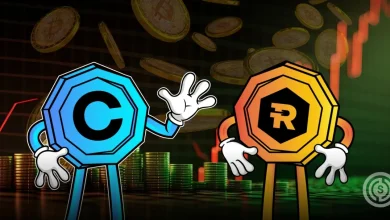ERC404 Tokens: Ethereum’s Mixed Blessing

A very recent and startling incident has drastically changed the face of Ethereum trading, as new sorts of tokens known as ERC404 have quickly grabbed center stage in volumes traded on DEX applications. Earlier, less than a week after their market debut, these hybrid tokens were rife with controversial trades and transactions. The Pandora collection has emerged as the greatest, with a whooping $ 230 million in trading volume since its introduction on February 2nd. This success has now propelled PANDORA/WETH to the third-largest liquidity pool on Uniswap, after only the well-established pools USDC/ETH and USDC/USDT.
ERC404 has brought about a significant shift in the realm of digital assets because it is designed to incorporate characteristics from both cryptocurrencies and NFTs. This has significantly improved liquidity for NFTs, which were previously regarded as exceedingly unattractive. The adoption of this disruptive normal means that whenever a user receives a token from an erc40 project, the NFT is automatically generated. This gives users two options: sell their token and destroy the NFT, or post it for sale on renowned marketplaces such as Opensea, where potential purchasers can purchase it.
Pandora, MNRCH, and DeFrogs were the top three projects trading at ERC404 in the last 24 hours, with a combined volume of $113 million. This represents just under 12% of Uniswap’s nominal Ethereum trading. At the same time, this might be viewed as a huge success for these tokens, but it also reveals some serious concerns. Due to the popularity of ERC404 tokens, project founders have unexpectedly pulled liquidity, leaving consumers with worthless tokens. Second, the cost of gas on the Ethereum network has significantly increased as a result of the huge demand for these tokens.
The flood of excitement that swept ERC404 tokens on the backdrop was utilized by mid-groups that strategically invested in these tokens. In one case, a token called Punks skyrocketed from $350 to more than $20,000 in under two hours. But the value vanished practically immediately. However, this was due to a dishonest strike, which allowed its inventor to generate a limitless number of Punks tokens, allowing him to profit millions from market sales while investors suffered.
The history of recent events in the thriving ERC404 token market showed structural flaws that enabled countless more crimes utilizing this technology; thus far, many collections have fallen victim to it. The introduction of ERC404 tokens has also contributed to an increase in gas costs on the Ethereum network, with an average fee of 53 gwei established within a day.
This is a significant rise above the previous week’s average transaction charge of 29cgwei. Each time a user does an Ethereum transaction, they must pay gas fees. as a result, when demand grows, these rates rise in order to protect against spamming and maintain network security.
The founder of the Pandora collection stated that planned enhancements to the ERC404 standard might reduce gas prices by 300% – 400%, which would be appreciated by members of the Ethereum community. With the ERC404 token standard taking shape and form, NFTS may face a paradigm shift as popularity and liquidity scales on Ethereum increase – albeit various obstacles must be overcome before reaching best practices standards.



